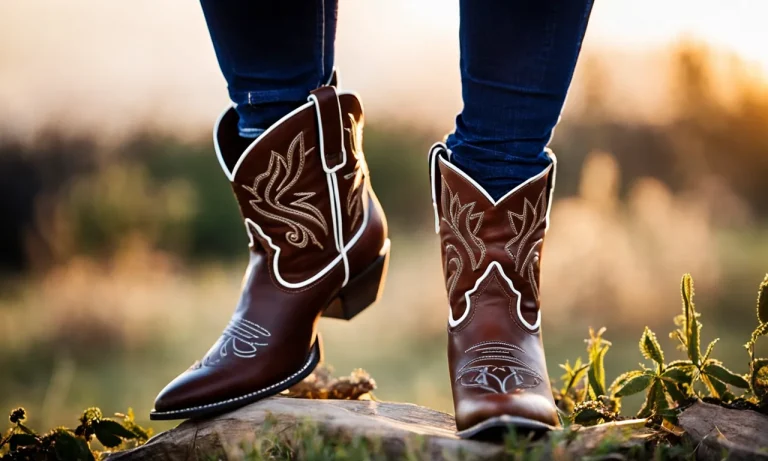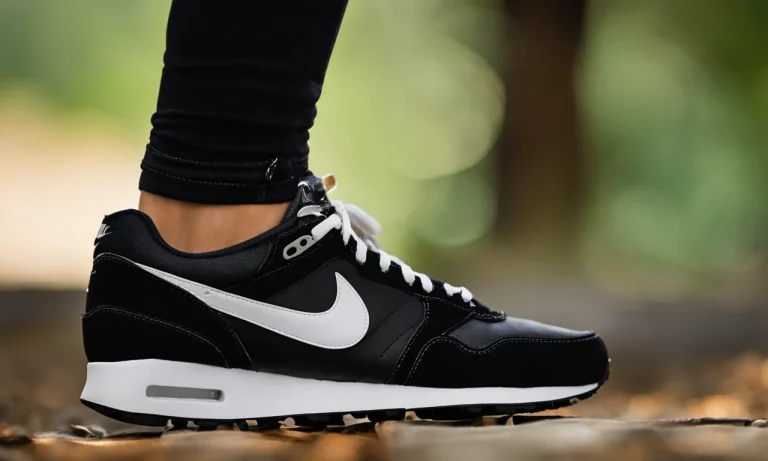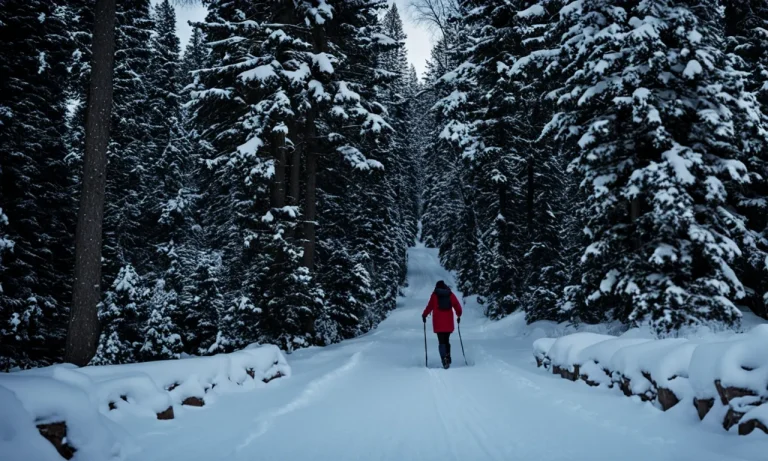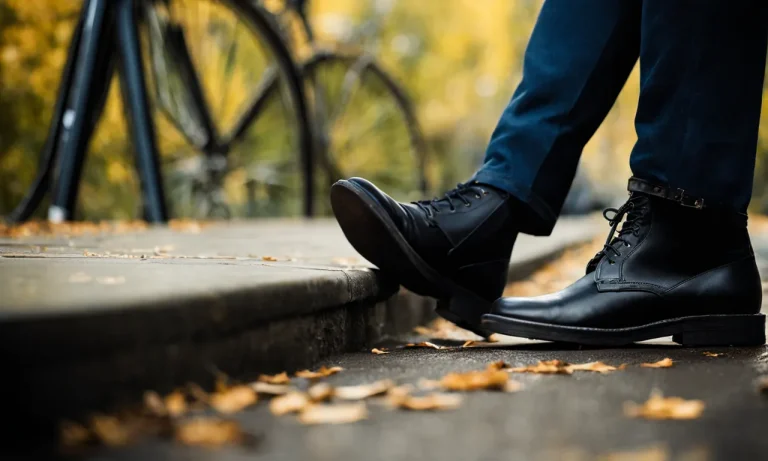Skiing down a pristine mountain slope with the wind in your hair is a feeling like no other. But before you can experience that rush, you need the right ski boots. With such a wide variety of ski boots on the market, you may be wondering – how much do ski boots really cost?
If you’re short on time, here’s a quick answer: Expect to spend $100-$800 on ski boots, with most recreational skiers opting for boots in the $200-$400 range.
In this comprehensive guide, we’ll cover everything you need to know about the cost of ski boots. You’ll learn about the different types of boots, features that affect price, and get example prices for beginner, intermediate, and advanced boots.
We’ll also provide tips to help you get the best deal on your next pair.
Types of Ski Boots
When it comes to skiing, having the right equipment is essential. Ski boots are an important component of your gear, as they provide the support and control you need on the slopes. There are several types of ski boots available, each designed for different skill levels and preferences.
Here are the main categories:
Beginner Ski Boots
For those new to skiing, beginner ski boots are a great option. These boots are typically more forgiving and comfortable, with softer flex and wider last widths. They prioritize comfort and ease of use, making them perfect for those who are still learning the basics.
Beginner ski boots are often more affordable, making them a popular choice for those on a budget.
Intermediate Ski Boots
Intermediate ski boots are designed for skiers with some experience under their belts. These boots offer a balance between comfort and performance, with a slightly stiffer flex and narrower last widths compared to beginner boots.
They provide more control and responsiveness, allowing intermediate skiers to progress their skills on the slopes.
Advanced/Performance Ski Boots
For experienced skiers looking for maximum performance, advanced or performance ski boots are the way to go. These boots have a stiff flex and narrow last widths, providing excellent power transmission and precision.
They are designed for aggressive skiing and can handle high speeds and challenging terrain. Advanced ski boots often come with customizable features and advanced technologies to enhance performance.
Ski Boot Liners
The liners in ski boots play a crucial role in providing comfort and support. They are the inner layer of the boot that wraps around your foot. Ski boot liners are typically made of foam and can be heat-molded to your feet for a customized fit.
They help to keep your feet warm and secure inside the boot. Liners can also be replaced or upgraded to improve comfort and performance.
When choosing ski boots, it’s important to consider your skill level, skiing style, and personal preferences. It’s recommended to try on different boots and consult with a knowledgeable boot fitter to find the perfect fit.
Remember, investing in quality ski boots is worth it for a more enjoyable and safer skiing experience.
Ski Boot Features That Impact Cost
When it comes to purchasing ski boots, there are several factors that can affect the cost. Understanding these features can help you make an informed decision and find the perfect pair that suits your needs and budget. Here are some key features to consider:
Stiffness and Flex
The stiffness and flex of a ski boot are important factors that impact both performance and cost. Stiffer boots provide better control and responsiveness, making them ideal for advanced skiers. These boots often come at a higher price due to the advanced materials and technology used in their construction.
On the other hand, boots with a softer flex are more forgiving and comfortable for beginners and intermediate skiers, and they tend to be more affordable.
Materials
The materials used in the construction of ski boots can greatly influence their cost. High-end boots are typically made with advanced materials such as carbon fiber, which offers superior strength and lightweight properties.
These materials are more expensive, thus driving up the overall cost of the boots. On the other hand, entry-level boots are usually made with less expensive materials like plastic, which are more budget-friendly.
Fit and Comfort Features
The fit and comfort features of ski boots can also impact their cost. Boots that offer a customizable fit, such as heat-moldable liners, tend to be more expensive. These liners can be molded to the shape of your feet, providing a precise and comfortable fit.
Additionally, boots with added padding, cushioning, and insulation for warmth can also contribute to a higher price tag.
Closure System
The type of closure system used in ski boots can also affect their cost. Traditional ski boots often feature buckles or laces, which are typically more affordable. However, newer models may include advanced closure systems such as Boa or ratchet systems, which offer quick and precise adjustments.
These systems can add to the overall cost of the boots due to the added technology and convenience they provide.
Heat Moldability
Some ski boots offer heat moldability, allowing the boots to be custom-molded to the shape of your feet for a more comfortable fit. This feature is often found in higher-end boots and can contribute to a higher price point.
Heat moldability ensures a better fit and can enhance overall performance on the slopes.
Replaceable Parts
Lastly, the availability of replaceable parts can impact the cost of ski boots. Some boots come with replaceable soles, buckles, or liners, allowing you to extend the lifespan of the boots by replacing worn-out components.
While this feature may increase the initial cost of the boots, it can save you money in the long run by avoiding the need for a complete boot replacement.
Cost Range Examples
Beginner Ski Boots
For those just starting out in skiing, investing in a good pair of beginner ski boots is essential. These boots are designed to provide comfort and support while you learn the basics of skiing. The cost of beginner ski boots can vary depending on factors such as brand, materials used, and additional features.
On average, you can expect to pay anywhere from $150 to $300 for a pair of beginner ski boots.
It’s important to keep in mind that while you may be tempted to go for the cheapest option available, investing in a slightly more expensive pair can make a significant difference in your skiing experience.
Higher quality boots often offer better fit, insulation, and overall performance, allowing you to progress faster and enjoy your time on the slopes more.
Intermediate Ski Boots
Once you have gained some experience and confidence on the slopes, you may find yourself ready to upgrade to a pair of intermediate ski boots. These boots are designed for skiers who are looking for more performance and control, while still maintaining a certain level of comfort.
The cost of intermediate ski boots can range from $300 to $600, depending on factors such as brand, materials, and advanced features. These boots often offer a stiffer flex, improved fit, and better energy transfer, allowing you to tackle more challenging terrain and improve your skills.
It’s worth noting that investing in a pair of well-fitting intermediate ski boots can greatly enhance your skiing experience. Ill-fitting boots can cause discomfort, pain, and even affect your performance on the slopes.
Therefore, it’s recommended to try on different brands and models, and seek professional fitting advice when making your purchase.
Advanced/Expert Ski Boots
For advanced skiers or those who are passionate about the sport, investing in a pair of high-performance ski boots is a must. These boots are designed to offer maximum control, responsiveness, and power transfer, allowing you to push your limits on the mountain.
The cost of advanced or expert ski boots can range from $600 to over $1000, depending on the brand, materials used, and technological advancements. These boots often feature customizable fit options, carbon fiber construction, and specialized features for specific skiing disciplines such as racing or freestyle.
While the price tag may seem steep, advanced ski boots are engineered to provide the best performance and durability for serious skiers. They are often lighter, more responsive, and offer better energy transmission, allowing you to take your skiing to the next level.
Remember, the cost of ski boots can vary depending on various factors, and it’s important to consider your skill level, skiing style, and budget when making a decision. Additionally, it’s always a good idea to try on multiple pairs, seek professional advice, and invest in boots that provide the best fit and performance for your individual needs.
Getting the Best Deal on Ski Boots
Skiing is an exhilarating sport that requires proper equipment, and one of the most important pieces of gear is a good pair of ski boots. However, ski boots can be quite expensive, especially for those who are new to the sport or on a budget.
To help you get the best deal on ski boots, we have compiled a list of tips and strategies that can save you money without compromising on quality.
Shop Off-Season Sales
If you’re looking to save money on ski boots, one of the best ways to do so is by shopping during off-season sales. Many ski shops and online retailers offer significant discounts on ski gear, including ski boots, at the end of the winter season or during the summer months.
By taking advantage of these sales, you can often find high-quality ski boots at a fraction of their original price.
Buy Used/Demo Gear
Another way to save money on ski boots is by considering buying used or demo gear. Many ski resorts and rental shops sell their old ski boots at discounted prices. These boots are often in good condition and can be a great option for those who are just starting out or don’t ski frequently.
Additionally, some ski shops offer demo days where you can try out different ski boots before purchasing them at a discounted price.
Consider Renting First
If you’re unsure about investing in a pair of ski boots, considering renting them first can be a cost-effective option. Renting ski boots allows you to try out different brands and styles to find the perfect fit for your feet and skiing style.
Additionally, renting can be a great option if you only ski occasionally or are planning a short ski trip. Many ski resorts and rental shops offer affordable daily or weekly rental rates, making it a convenient and budget-friendly choice.
Bundles and Packages
When shopping for ski boots, it’s worth looking into bundles and packages that include other ski gear. Many retailers offer discounts when you purchase a complete ski package, which typically includes skis, bindings, and boots.
These packages can often save you money compared to buying each item separately. Additionally, some ski resorts offer rental packages that include both skis and boots at a discounted rate. Be sure to compare prices and options to find the best deal for your needs.
By following these tips and strategies, you can get the best deal on ski boots without breaking the bank. Remember to shop during off-season sales, consider buying used or demo gear, try renting first, and explore bundles and packages.
With a little research and savvy shopping, you’ll be hitting the slopes in style without emptying your wallet.
Conclusion
With ski boots ranging in price from around $100 to over $800, it’s important to focus on your skill level and features when deciding how much to spend. Most beginner and intermediate skiers will be happy with boots costing $200 to $400.
More advanced skiers may want to invest in higher end models with top-of-the-line features. By considering your needs and taking advantage of sales opportunities, you can find high quality ski boots that fit your budget.
The thrill of carving down a snow-covered mountain starts with having the right ski boots on your feet. Now that you know what to expect in terms of costs for different performance levels, you can shop confidently for your next pair. Here’s to many more epic days hitting the slopes!






